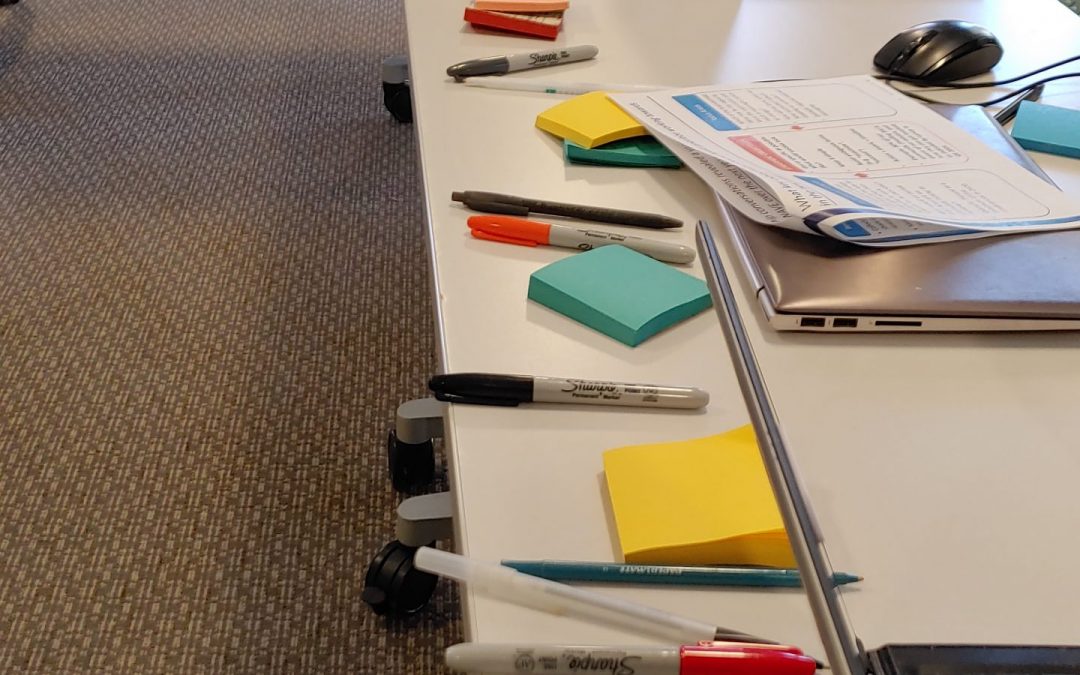January isn’t even over, and already I have spent five full days and one half-day in meetings with staff and volunteers together. In New York, Kansas, and Colorado, I facilitated trainings and retreats each with a mix of staff, volunteers, national service members, and, in one case, an unpaid executive director. For two additional days in Denver, I was a volunteer participating in a strategic planning retreat for the new National Alliance for Volunteer Engagement. Add in the client meetings on my other days, and already 2020 has been filled with a lot of meetings, which got me thinking about how meetings can make or break the relationship with volunteers.
When we conduct assessments of volunteer engagement and interview staff and volunteers about their experiences, one common theme among those who feel a true and impactful partnership is that volunteers are included in team or department meetings, where appropriate. Volunteers who are included in project or team meetings contribute far more than those who aren’t, and staff who include volunteers in meetings are able to accomplish more than those who don’t. Of course, that all depends on whether the meetings are necessary and effective.
So, to kick off 2020, we wanted to share a few tips to ensure your meetings are meaningful for all.
Before scheduling a meeting, consider:
- What is the purpose of this meeting?
- If you cannot articulate the purpose of the meeting, then don’t meet.
- If you can clearly state the purpose, consider whether that purpose warrants a meeting. For example, if the sole goal is to share information, could the information be shared via email, document sharing, or video?
- If, however, the goals include not only sharing information but also building an esprit de corps or brainstorming solutions, then plan appropriate team building or brainstorming activities into the agenda as well as sharing updates.
- What is the role of each attendee?
- Every participant should have a defined role and all attendees should be aware of their role and what is expected of them. Have you communicated these roles? Do the staff members understand why volunteers are participating? Are the volunteers present to provide insights from the “volunteer perspective” or to share their expertise as skilled members of the team? Perhaps both?
- How will the group work together?
- How will decisions be made? If volunteers are providing input but staff will be making decisions, that needs to be clear. But if you are seeking to cultivate a collaborative team, then determine your decision-making process (for example, consensus or majority rule) and clarify that from the start.
- What are your working norms? Whether this group forms for a one-time meeting or for ongoing work together, establishing norms may be helpful. After developing your meeting norms, consider printing them as reminders on table tents, slides, or the agenda for any future meetings.
At the meeting, be sure to:
- Be efficient.
- Have a clear, realistic agenda.
- Assign a skilled facilitator to lead the meeting and encourage everyone’s participation.
- Ensure everyone knows each other, their own
role, and the roles of others.
- Consider name tags or table tents if the group is new to each other.
- When engaging both staff and volunteers, consider avoiding identifying participants as “staff” or “volunteers” after the initial introductions. If people are attending the meeting because they are a full participant in the process, then whether or not they are paid is rarely relevant to the discussion.
- Make it comfortable for everyone.
- Schedule breaks when appropriate.
- If it’s a long meeting, include food or let participants know they can bring their own snacks or beverages.
- Clarify next steps before concluding the meeting.
Following the meeting, consider:
- What follow up is necessary and expected? How will that be communicated to everyone? Do volunteers have access to all the relevant information? (For example, if meeting minutes are stored on an intranet, can volunteers access those files?)
- Who will be tracking the next steps?
While some meetings are unnecessary, meetings can also be a powerful way to collaborate, connect, and drive impact. Engaging volunteers in meetings with staff is an efficient way to leverage their skills and knowledge – but nobody likes to sit through boring meetings or waste their time hearing updates that could have been sent by email. So, be strategic about your meetings. Following these tips can help you transform your “meetings for the sake of meetings” into productive work sessions that increase your organization’s ability to meet mission.
